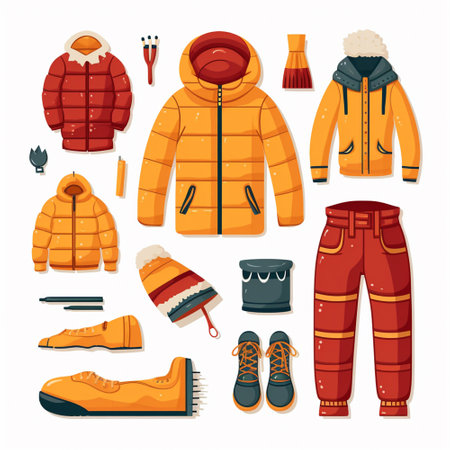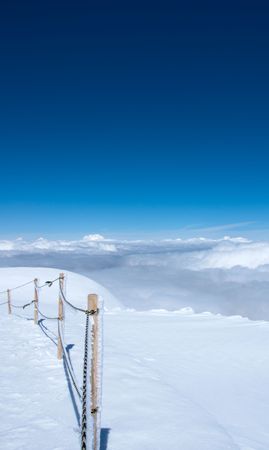1. Understanding Hypothermia in the British Outdoors
Hypothermia is a serious and potentially life-threatening condition that occurs when the body loses heat more quickly than it can produce it, causing core body temperature to fall below 35°C. In the context of Britains mountain environments, understanding hypothermia is especially important due to the countrys notoriously changeable weather and varied terrain. British mountains, such as those found in the Lake District, Snowdonia, and the Scottish Highlands, are known for rapid weather shifts — clear skies can quickly turn to rain, sleet, or snow, often accompanied by strong winds and low visibility. These conditions can catch even experienced walkers off-guard. The primary causes of hypothermia in these settings include prolonged exposure to cold temperatures, wet clothing from rain or sweat, wind chill, and exhaustion. Importantly, hypothermia doesn’t only occur in winter; even during summer months, high-altitude areas and exposed ridges can present significant risk factors due to wind and sudden temperature drops. For anyone venturing into the British hills, recognising how hypothermia develops — and appreciating its relevance within Britain’s unique mountain climate — is fundamental for safety and responsible outdoor practice.
2. Common Signs and Symptoms of Hypothermia and Exposure
Early recognition of hypothermia and exposure is crucial when operating in the unpredictable British mountain environment. The combination of damp, wind, and low temperatures found in places like the Lake District, Snowdonia, or the Scottish Highlands can quickly catch even seasoned hillwalkers off guard. Hypothermia develops in stages, and prompt identification allows for effective intervention before conditions worsen.
Early Symptoms: Spotting the Warning Signs
In the initial stages, symptoms may be subtle and easily attributed to tiredness or discomfort from a long day on the fells. Early indicators often include:
- Shivering: This is the body’s primary response to cold, signalling that core temperature is dropping.
- ‘Mumbling’ Speech: Slurred or slow speech may indicate mental impairment due to cold.
- Lack of Coordination: Stumbling or difficulty with simple tasks like operating rucksack buckles or map reading.
- Apathy: Uncharacteristic quietness, withdrawal from conversation, or a lack of interest in surroundings.
Table: Key Early Symptoms vs Advanced Symptoms
| Symptom Stage | Common Indicators (UK Mountain Context) |
|---|---|
| Early (Mild) Hypothermia | Shivering, fumbling fingers (e.g., struggling with gaiter straps), grumbling about feeling ‘chilled to the bone’, pale or bluish skin (especially lips and fingertips), mild confusion |
| Advanced (Moderate/Severe) Hypothermia | Shivering stops, inability to walk unaided on rough ground, severe confusion or irrational behaviour (such as undressing despite being cold), very slow pulse, unconsciousness |
Advanced Symptoms: Recognising Serious Risk
If early signs are missed, hypothermia can progress rapidly—especially during a sudden change in weather on exposed ridges like Striding Edge or Ben Nevis summit plateau. Advanced symptoms include:
- Cessation of Shivering: Ironically, shivering often stops as the body loses its ability to generate heat.
- Irrational Behaviour: Sometimes referred to as ‘paradoxical undressing’—removing clothing despite obvious cold.
- Deteriorating Mobility: Inability to walk over rocky terrain without assistance.
- Drowsiness or Unconsciousness: The casualty may become unresponsive; this requires immediate emergency action.
The Importance of Group Awareness in UK Hills
In typical British mountain settings, poor visibility and persistent drizzle can make it easy for these symptoms to go unnoticed within a group. Regularly checking on each other—especially those who are quieter than usual or trailing behind—can save lives. Remember: prevention and early detection are always preferable to dealing with severe hypothermia on an exposed hillside miles from help.

3. Initial On-the-hill Actions and Casualty Management
Step 1: Ensure Scene Safety and Immediate Assessment
Your own safety and that of your group must always come first. Before approaching a casualty, assess the environment for hazards such as unstable terrain, falling rocks, or severe weather conditions common in the British hills. Only proceed when it is safe to do so. Once on scene, perform a quick primary survey: check responsiveness, airway, breathing, and circulation (the classic DR ABC approach recommended by British mountain rescue).
Step 2: Protect from Further Heat Loss
Minimise exposure by moving the casualty out of wind, rain or snow if possible—behind a boulder or into a group shelter. Place insulating materials (like spare clothing, sleeping mats, or even rucksacks) beneath them to prevent ground heat loss. Cover with an emergency bivvy bag or survival blanket, making sure to tuck in all edges to prevent drafts. If the casualty is wet, remove damp clothing if safe and replace with dry layers—do not delay other critical interventions for this step.
Step 3: Gentle Handling and Monitoring
Handle the casualty gently; rough movements can worsen hypothermia and even trigger cardiac arrest in severe cases. Regularly monitor their level of consciousness and vital signs using simple checks (AVPU scale – Alert, Voice, Pain, Unresponsive). Avoid unnecessary movement and keep the head and neck supported if there’s any suspicion of injury.
Step 4: Reassurance and Calm Communication
Maintain calm communication with the casualty and team. Offer reassurance—panic accelerates heat loss and complicates management. Assign roles within your group: one person manages the casualty, others prepare equipment or seek help as needed.
Step 5: Emergency Communication and Evacuation Planning
If you suspect moderate or severe hypothermia, contact Mountain Rescue immediately using a mobile phone or radio where signal allows. Provide clear details: location (using grid references), number of casualties, their condition, and weather conditions. Begin planning for evacuation; do not attempt to walk out a severely hypothermic casualty unless absolutely essential.
Summary of Best Practice
The priorities are always safety first—for both rescuers and casualty—protection from further exposure, gentle handling, and timely communication with rescue services. These actions align closely with protocols advocated by British mountain rescue organisations and are proven to give the best chance of a positive outcome in challenging UK mountain environments.
4. Essential Equipment and Clothing for Prevention
Preparation is the cornerstone of safe mountain travel in the UK, where unpredictable weather and rapidly changing conditions can catch even seasoned hillwalkers unawares. Selecting the right clothing and equipment is not only about comfort but can be life-saving when it comes to preventing hypothermia and exposure.
Layering Systems: The British Approach
The classic British layering system remains a gold standard due to its flexibility and adaptability. The following table outlines a typical three-layer system suitable for most UK mountain environments:
| Layer | Purpose | Common Materials | Example Items (UK brands) |
|---|---|---|---|
| Base Layer | Wicks moisture away from skin | Merino wool, synthetic fibres | Rab Merino+ Tee, Montane Dart Base Tee |
| Mid Layer | Provides insulation | Fleece, synthetic fill, lightweight down (with caution) | Berghaus Prism Fleece, Mountain Equipment Lightline Jacket |
| Outer Layer (Shell) | Protects from wind and rain | Gore-Tex, eVent, similar waterproof/breathable fabrics | Paramo Velez Adventure Smock, Rab Kangri GTX Jacket |
Recommended Kit Selections for British Mountains
Your kit should address both regular use and emergency scenarios. Consider the following essentials as a starting point for your pack:
- Waterproof jacket and trousers: Always carry fully waterproof layers; sudden downpours are common.
- Insulating hat and gloves: Pack spares; wet hands and heads lose heat quickly in exposed locations.
- Bivvy bag or bothy shelter: Lightweight options provide critical protection if you’re caught out overnight or need to treat someone with exposure.
- High-energy snacks and a hot drink flask: Maintaining energy levels helps generate body heat; warm fluids offer psychological comfort.
- Navigational tools: Map, compass, and GPS device—fog and low cloud are frequent hazards in British hills.
- Torch/headtorch with spare batteries: Short daylight hours can catch people out, especially in winter months.
- Whistle and personal first aid kit: For attracting attention and managing minor injuries.
Cultural Considerations: Local Gear Availability & Weather Patterns
Bespoke British brands such as Rab, Mountain Equipment, Berghaus, Paramo, Montane, and Alpkit have designed kit specifically for damp, cool climates. These items are readily available across outdoor retailers in the UK and tend to prioritise weather resistance over ultra-lightweight materials—a reflection of local needs. Always check your gear before heading out: seams should be intact, zips functional, and waterproofing recently reproofed. Carrying a small repair kit (duct tape, needle/thread) is wise for on-the-hill fixes.
A Final Note on Prevention Strategy
No single piece of gear guarantees safety. Instead, thoughtful selection tailored to the day’s forecast—and an honest assessment of your group’s experience—offers the best defence against hypothermia in Britain’s beautiful yet challenging mountains.
5. When and How to Call for Help
Identifying the Right Moment to Request Assistance
Recognising when a situation has escalated beyond your group’s capacity is crucial in the British mountains. If a casualty shows signs of moderate or severe hypothermia—such as confusion, unconsciousness, uncontrollable shivering, or slurred speech—or if exposure symptoms are worsening despite your best efforts, it is time to seek help. Similarly, call for assistance if you are lost, trapped by weather, or unable to continue safely due to exhaustion or injury. In these scenarios, early intervention from Mountain Rescue can make a significant difference.
How to Contact Mountain Rescue and Emergency Services
The most reliable method in the UK is to dial 999 or 112 and ask for “Police – Mountain Rescue.” Mobile coverage can be patchy in remote areas, so move to higher ground if possible and try sending a text if calls fail. The UK also offers an emergency SMS service; pre-register by texting ‘register’ to 999, which allows you to send texts when voice calls don’t work.
Key Information to Provide
- Your exact location (using grid references from an OS map, app like OS Locate, or What3Words)
- The number of casualties and their conditions
- Your group’s size and any special medical needs
- Weather conditions and visibility at your location
Utilising Local Infrastructure and Resources
If you are near mountain huts, visitor centres, or bothies, use these as shelter while awaiting rescue. Inform local wardens or staff if present—they often have radio links or landlines. On popular routes, other walkers may assist with communication or providing warmth. Always leave someone with the casualty if safe, but send two people together to raise the alarm if mobile contact is impossible.
Final Tips for Effective Communication
Stay calm and concise when speaking to emergency services. Conserve your phone battery: turn off unnecessary apps and keep the device warm inside clothing. Remain where you reported your position unless instructed otherwise by rescuers. Following these steps ensures that help arrives efficiently in the challenging conditions of Britain’s mountains.
6. Case Studies from British Mountain Incidents
Learning from real incidents is invaluable for anyone venturing into the British hills. Below are short summaries of notable hypothermia cases that have occurred in the UKs mountain environments. Each case offers practical insights for hikers, climbers, and mountain rescue teams alike.
Lost on Snowdon: The Importance of Navigation and Warmth
In early spring, a pair of walkers became disoriented in low cloud near the summit of Snowdon. Poor navigation led them off-path, and they spent several hours exposed to wind and rain before being found by Llanberis Mountain Rescue. Both were suffering mild hypothermia, worsened by inadequate clothing and no emergency shelter. Learning Point: Always carry a map, compass, and sufficient warm layers—even in seemingly benign weather conditions.
Ben Nevis Winter Climb: Recognising Early Symptoms
A winter climbing party on Ben Nevis noticed one member becoming increasingly lethargic and confused after several hours in sub-zero temperatures. Quick action—providing dry clothing, hot drinks, and immediate descent—prevented further deterioration. Learning Point: Early recognition of ‘the umbles’ (mumbles, stumbles, grumbles) can be life-saving; don’t ignore subtle changes in behaviour or speech.
The Lake District Fell Runner: Group Dynamics and Decision Making
During a fell race in the Lake District, a solo runner was found shivering uncontrollably on Helvellyn’s ridge after being separated from their group. Fellow competitors provided an emergency bivvy bag while awaiting rescue. The runner made a full recovery but highlighted how quickly exposure can set in when alone and exhausted. Learning Point: Stay with your group whenever possible and always carry basic emergency kit—even during organised events.
Cairngorm Plateau: Kit Failure and Improvisation
A hillwalking group experienced severe weather on the Cairngorm plateau when one member’s waterproof jacket failed. The team improvised using spare insulation layers and a group shelter until help arrived. Learning Point: Equipment failure can happen; carrying spares and knowing how to improvise may buy critical time.
Takeaway Lessons for British Mountain Goers
These cases demonstrate that hypothermia can develop rapidly in British mountains, often underestimating both the weather and terrain. Preparation, vigilance within groups, early intervention, and carrying the right equipment are key to preventing tragedy. Ultimately, learning from others’ experiences reinforces the importance of respect for Britain’s unique mountain environments.


